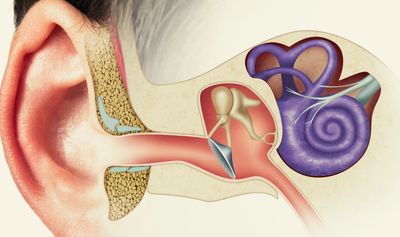Tailored Treatment to maximise your chance of success

What Is a Tympanic Membrane Perforation?
A perforated eardrum is a hole or tear in the thin tissue that separates your outer ear from your middle ear. It can affect hearing and make the ear more vulnerable to infections.
Most perforations heal by themselves. However, if the hole persists, it may lead to recurrent infections or ongoing hearing loss — and in those cases, surgery can help.
What Are the Symptoms?
- Hearing loss (usually mild to moderate)
- Ear discharge (clear, bloody, or pus-filled)
- Tinnitus (ringing or buzzing in the ear)
- Occasional discomfort or pain
- Increased risk of ear infections (especially after swimming or showering)
Common Causes
- Infections (acute or chronic otitis media)
- Trauma (e.g. cotton buds, a slap to the ear, or barotrauma from flying/diving)
- Ear surgery or grommets that haven’t fully healed
How Is It Diagnosed?
A thorough ENT examination includes:
- Visual inspection of the eardrum (otoscopy)
- Hearing test (audiogram)
- Tympanometry (measuring middle ear pressure and eardrum mobility)
- Occasionally, a CT scan if additional middle ear issues are suspected
Treatment Options
Observation
Small and recent perforations often heal on their own over a few weeks. It is important to avoid any water from entering the ear during this period
Hearing Aids
These can help improve access to sound and reduce listening effort for patients who have hearing loss associated with their perforation
Tympanoplasty (Eardrum Repair Surgery)
For non-healing or symptomatic perforations, surgery can be considered. The goal is to close the hole, prevent infections, and improve hearing.
Mr Patel performs tympanoplasty:
- Endoscopically (through the ear canal, no external cuts)
- Under local anaesthetic with sedation or general anaesthetic
- Uusally as a day case procedure
Our APPROACH - personalised care aligned with your needs

Philosophy
As one of the few UK surgeons offering ear drum repair under local anaesthesia with an endoscope, Mr Patel is able to offer patients:
- The most minimally invasive techniques
- A patient-focused experience allowing patients to observe their procedure
- A choice of settings for the procedure, either in office or in theatres depending on patient preference
- A swifter recovery
- Tailored techniques for the size, shape and position of your perforation
Surgical Results
Closure Rates:
93% of patients undergoing tympanoplasty will achieve closure of their perforation. The rates are higher with smaller perforations without active discharge and lower for larger, perforations with continuous discharge.
Hearing improvement:
For patients who achieve closure of their perforation, they experience, on average, a 24% improvement in their hearing. With an average post surgery air bone gap of 12dB.
Tailored Treatment
Depending on your preferences and the extent of the perforation the procedure can be performed in a variety of settings. For small perforations, an ‘in-office’ procedure can provide a seamless experiences with minimal downtime, while for larger or more complex perforations surgery is offered in the operating theatre. Similarly surgery can be performed awake or with general anaesthesia depending on the extent of surgery and patient preference.
Patient Feedback
Copyright © 2025 London ENT Surgery - All Rights Reserved.